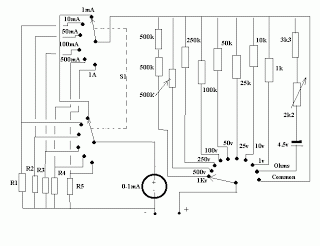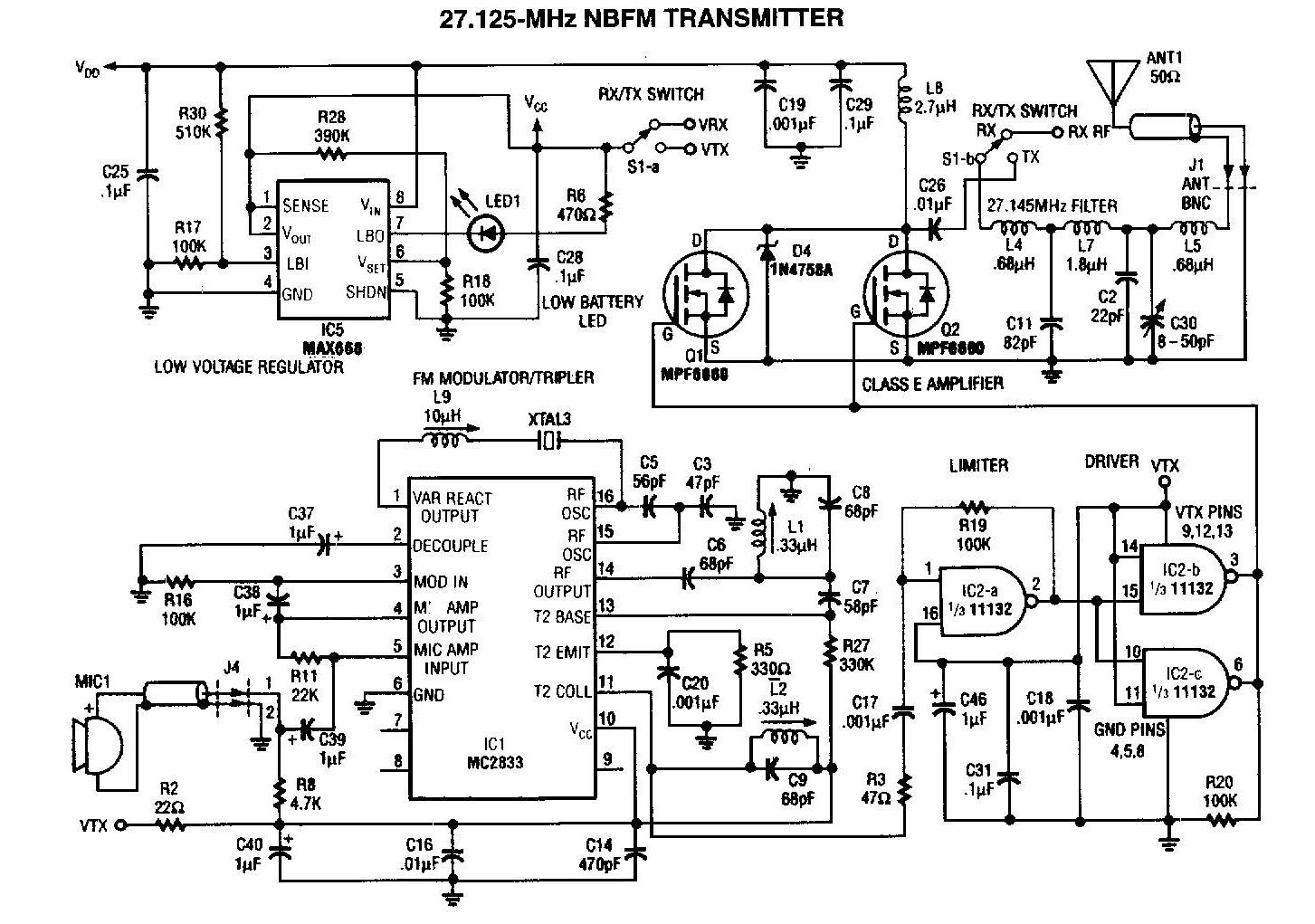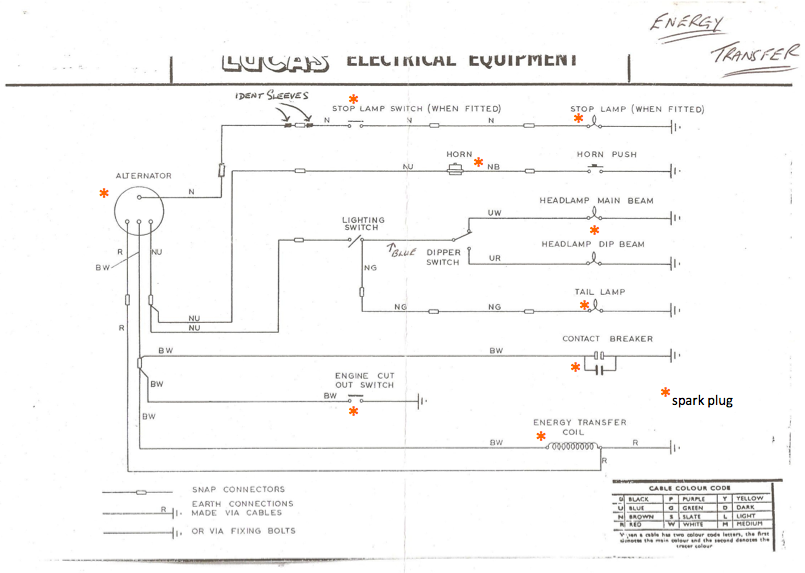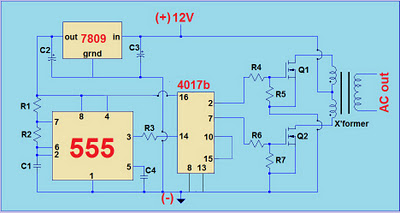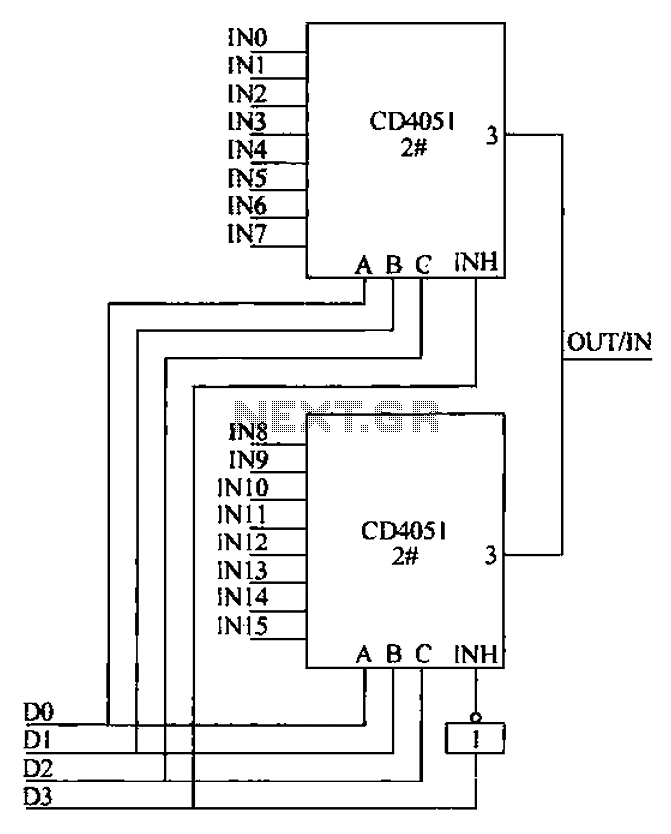
Additional formula LP Recorder increased compensation circuit diagram image HQ
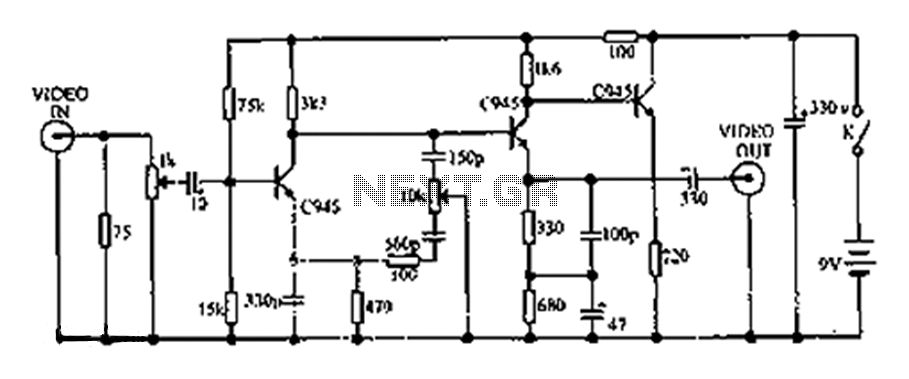
This circuit compensates for additional defects in image quality associated with LP (long play) recorders. The frequency components of the television signal reflect the details displayed on the screen. Enhancing the high-frequency components increases the edge sharpness of the image, a process known as detail enhancement, which is utilized in modern video recorder technology, particularly in four HQ formats. This circuit enhances television signal components around 3 MHz to improve picture clarity and contour definition. Practical application has demonstrated that the picture quality in LP mode is significantly improved. During adjustment, the VCR should be opened, and the variable resistor (1 kΩ) should be tuned until the brightest picture is achieved. Since different signals may vary, the 10 kΩ potentiometer should be adjusted based on the specific picture quality requirements during use to ensure the clearest image.
The circuit described focuses on enhancing the image quality of LP recorders by targeting specific frequency components of the television signal. The design includes a signal processing stage that filters and amplifies the 3 MHz frequency components, which are crucial for reproducing fine details and sharp edges in the displayed image.
To implement this circuit, a bandpass filter can be employed to isolate the 3 MHz frequency range. This filter can be designed using operational amplifiers (op-amps) configured in a Sallen-Key topology, which offers good selectivity and a manageable design complexity. Following the filter stage, an adjustable gain stage can be incorporated using a variable resistor (1 kΩ) to allow for fine-tuning of the signal strength, optimizing the brightness and clarity of the output image.
The feedback mechanism in the circuit ensures that variations in incoming signal strength do not adversely affect the picture quality. A second variable resistor (10 kΩ) can be connected to a potentiometer to provide additional control over the output level, allowing for user adjustments based on the specific content being viewed. This feature is particularly important as different video signals can exhibit varying characteristics, necessitating tailored adjustments to achieve optimal clarity.
The overall circuit design must consider power supply requirements, ensuring that all components are adequately powered for reliable operation. Additionally, care should be taken to minimize noise and interference, which could degrade the enhanced image quality. Shielding and proper grounding techniques should be implemented to maintain signal integrity throughout the processing stages.
In conclusion, this circuit provides a sophisticated solution for enhancing the image quality of LP recorders by focusing on critical frequency components, allowing for user adjustments to achieve the best possible viewing experience.After this circuit can compensate for additional LP recorder function defects in image quality. Television signal frequency component reflects details of the screen, as will be appropriate to enhance the high frequency component can be increased edge sharpness of the screen, called detail enhancement, which is used in modern video recorder technology of four HQ one. This circuit television signal 3MHz nearby components to enhance, to improve picture clarity and sense of contour.
Practice has proved that the picture quality of LP state had a better. When adjusting, open the VCR, adjust the variable resistor 1k Europe until the brightest picture. Due to compensate for the different signals are not the same, to be adjusted according to the picture potentiometer 10k European situation when in use, so the clearest picture.
The circuit described focuses on enhancing the image quality of LP recorders by targeting specific frequency components of the television signal. The design includes a signal processing stage that filters and amplifies the 3 MHz frequency components, which are crucial for reproducing fine details and sharp edges in the displayed image.
To implement this circuit, a bandpass filter can be employed to isolate the 3 MHz frequency range. This filter can be designed using operational amplifiers (op-amps) configured in a Sallen-Key topology, which offers good selectivity and a manageable design complexity. Following the filter stage, an adjustable gain stage can be incorporated using a variable resistor (1 kΩ) to allow for fine-tuning of the signal strength, optimizing the brightness and clarity of the output image.
The feedback mechanism in the circuit ensures that variations in incoming signal strength do not adversely affect the picture quality. A second variable resistor (10 kΩ) can be connected to a potentiometer to provide additional control over the output level, allowing for user adjustments based on the specific content being viewed. This feature is particularly important as different video signals can exhibit varying characteristics, necessitating tailored adjustments to achieve optimal clarity.
The overall circuit design must consider power supply requirements, ensuring that all components are adequately powered for reliable operation. Additionally, care should be taken to minimize noise and interference, which could degrade the enhanced image quality. Shielding and proper grounding techniques should be implemented to maintain signal integrity throughout the processing stages.
In conclusion, this circuit provides a sophisticated solution for enhancing the image quality of LP recorders by focusing on critical frequency components, allowing for user adjustments to achieve the best possible viewing experience.After this circuit can compensate for additional LP recorder function defects in image quality. Television signal frequency component reflects details of the screen, as will be appropriate to enhance the high frequency component can be increased edge sharpness of the screen, called detail enhancement, which is used in modern video recorder technology of four HQ one. This circuit television signal 3MHz nearby components to enhance, to improve picture clarity and sense of contour.
Practice has proved that the picture quality of LP state had a better. When adjusting, open the VCR, adjust the variable resistor 1k Europe until the brightest picture. Due to compensate for the different signals are not the same, to be adjusted according to the picture potentiometer 10k European situation when in use, so the clearest picture.
